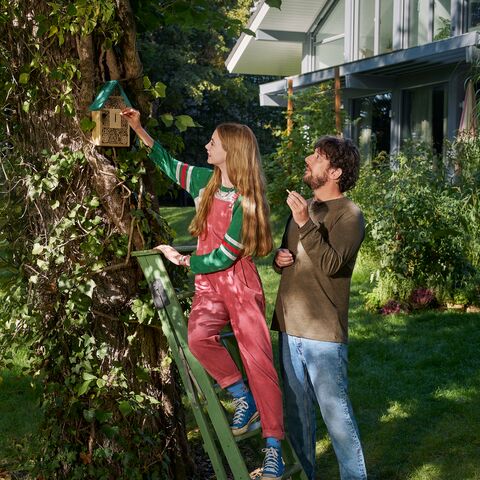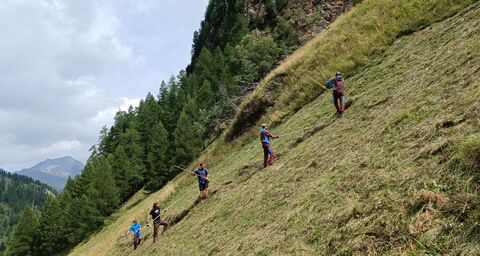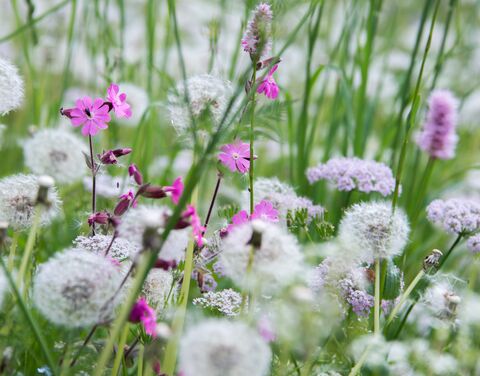
Plant your own flower meadow!
Do you dream of a meadow of colorful flowers that perfume the summer air? Dream no more! You can plant a flower meadow in your garden, on your balcony or even on your roof. From sowing the wildflowers to mowing your yard to caring for your soil, we give you practical tips for gorgeous blooms suited to your area.
Flower gardens are beautiful to look at and good for the soul. And they also protect numerous insects: Meadows rich in pollen and nectar are an ideal source of food for bees, bumblebees, butterflies, lacewings and other insects. A natural garden directly helps increase biodiversity. Surprisingly, meadows filled with wildflowers are also much easier to care for than grass lawns. The instructions below will help you plant a flower meadow that will last for years.
Suitable areas
You can plant flower meadows in many different areas:
- A space that is at least 30 square meters is ideal.
- The right location is one that has native, unamended soil and gets plenty of sunlight. Shade does not produce as many flowers, and grasses will become more dominant starting from the second year.
Even a mini flower meadow on your balcony provides habitat and food for small, beneficial insects.
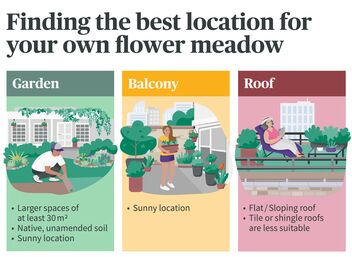
How to find the right space
The table below will help you find the best place to plant a flower meadow at home:
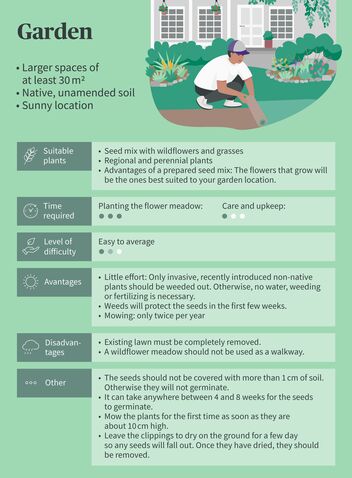
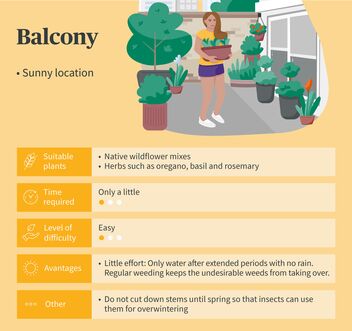
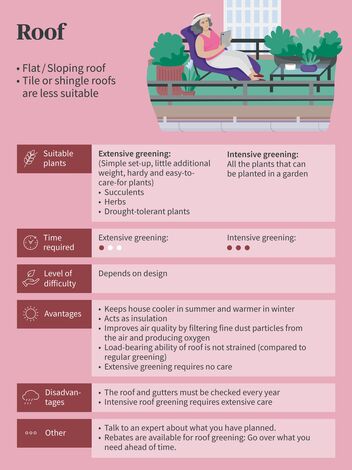
Types of flower meadows
There are different types of flower meadows that foster biodiversity. Based on available space and other factors, for your home we recommend the following varieties:
- Flowering lawns: These are very similar to grass lawns, but they contain a lot of flowering plants and herbs. This makes them a lot more valuable from an ecological perspective than a traditional lawn. The lawn should be mowed between five and ten times a year.
- Hay meadow: This typical “flower meadow” has the most colors and the most flowers. It is cut two to three times a year, with the first cutting in June.
- Dry meadows: These need a particularly sunny location and soil that is nutrient deficient. They are very valuable in ecological terms because they are made up of rare plants . In residential areas, they are more suited to larger, undisturbed areas. They should not be mowed until July.
Now it’s time to plant!
To enjoy the beauty of your wildflowers and the bounty of little visitors as long as possible, you should note the following points before and after you sow the seeds:
Starting your meadow
You can sow flowers that have different bloom times. This way you create a rich and diverse flower buffet that insects can visit any time of year. Here are the things you need to do first:
- Plan out where you want your flower meadow to go and how it should be set up. For example, figure out where you want your pathways to go ahead of time.
- Any existing lawn or vegetation needs to be removed by pulling it up, covering it or shredding it.
- Make sure to buy good quality seed. And use plants native to Switzerland wherever you can.
- The best time to sow your seeds is in spring, between March and May.
- You shouldn’t bury the seeds. Simply press them into the ground with a shovel or walk over them.
- Don’t spray them directly with too much water. A gentle stream of water prevents the seeds from washing away.
- During the first year, be sure to mow the flowers low to the ground two to three times to ensure the seeds receive enough light.
Tending your meadow
A meadow that contains a wide variety of flowers doesn't need much care. No fertilizer is necessary, for instance. It's important to mow the meadow. Flower lawns can be mowed with a lawnmower, but traditional meadows will need a scythe or sickle bar mower. Here are some tips to help you out:
- Adjust the number of times you mow to your vegetation.
- Don’t mow your meadow too late; cut it when the flowers are still in bloom.
- Be sure to respect wildlife when you mow and mow at the right time.
- Leave the cuttings lying out in the sun for two to three days. This way the seeds can mature and fall out.
- Put the cuttings in the compost or on a pile made for cuttings.
- In the fall, the meadow should not be allowed to grow too high before winter.
- When you mow, leave little islands or strips of old grass for insects to overwinter in.
- Pull up problem plants and invasive, recently introduced non-native species.
Checklist for your flower meadow
- Diversity: In a garden with a wide variety of plants, there is always something that’s in bloom. Plants trees, shrubs, grasses, forbs, hedges, etc.
- Structures: Animals love little niches and hideaways. Every garden needs to have piles of branches, dry masonry walls and other things of this type.
- Native plants: The insects in Switzerland have evolved to live on native plants. Ideally, you should only plant native plants in your garden. This is especially important for trees. They create a huge amount of biomass.
- Chemical substances: Avoid using herbicides, insecticides and synthetic fertilizers.
- Care: Less is more. Many insects overwinter in fallen leaves or in the hard, hollow stems of plants. Gardens that are too tidy do not provide such shelter.
- Animal hazards: Keep animals from harm by removing dangerous items such as glass shards or securing basement shafts.
- Light: Excessive light at night creates problems for nocturnal creatures. Use motion detectors that light up only when they are activated.

